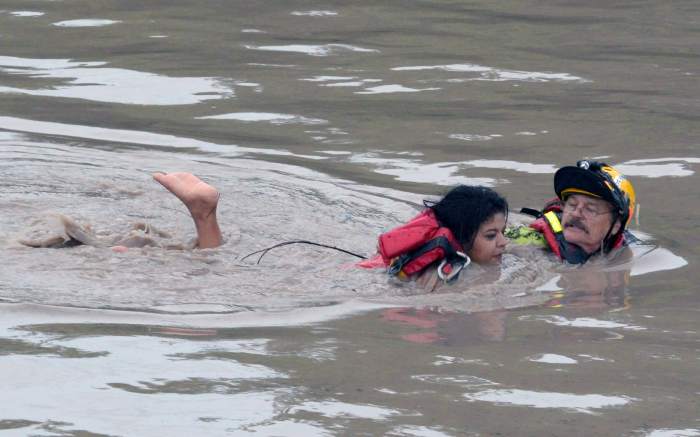If you go down to the woods today, you’re sure of a big surprise. Visitors to Grizedale Forest, in northwest England, have been treated to a virtual reality installation that lets them see the terrain as an animal would. “In the Eyes of the Animal” combines the use of an Oculus Rift VR headset and high-quality headphones to recreate the sensory experience of a woodland critter. Barney Steel, co-founder of Marshmallow Laser Feast, the creative group behind the project, explains to Metro how transmogrifying into beasts is now a possibility — at least, virtually. Q: How did you make this animal sensory experience a reality?
— We loved the idea of presenting what is a very ‘techy’ project — a virtual reality experience — in a remote part of Grizedale forest, amongst the trees and leaves surrounded by the woodland’s natural sounds and smells. We wanted to include a sense of touch as well as sound and sight into our piece. We designed a trail that’s “flocked” with objects from the forest that had the same texture as our headsets. The trail led the audience to a tree where our headsets hung like strange fruit from a tree. Q: What inspired you to create the project in the first place?
— Seeing the world from perspectives outside the normal standing and sitting human viewpoint is one thing but what about the world beyond the limits of human senses? This could be as simple as using the 120fps video function on your iPhone or shooting with a wide-angle lens. We like to use technology to reveal the world beyond the limits of human senses. ‘In the Eyes of the Animal’ is one such project that questions our everyday reality by revealing the forest through the sensory perspective of the creatures that live there. For example, what does the forest look like to a midge that can detect CO2 in the air? Or that can sense heat and smell skin? A bird of prey that can spot a small rodent from 200 meters up? A dragonfly that is able to see more colours in the spectrum than the human eye? It’s endlessly fascinating and we love using VR as a tool to explore these curiosities. Q: How does this VR set work?
— Our project was designed for the developer kit of the Oculus Rift and we designed a housing for it that contained high-quality headphones, hung from a tree by a magnetic system that provided a sculptural quality to the work. Overall, our work sampled the forest in many ways: we visually took a physical sample of moss and bark for the front faces of the headsets and scanned it with LiDAR. We additionally sampled the forest sonically through binaural audio recordings from the site. Inside the headsets we had an Oculus Rift and a pair of headphones that were wired to very powerful computers that processed the 3D data in real-time. Q: How have people reacted to your project?
— People of all ages have seen the VR experience and each account is quite different and very personal. It’s interesting to find out what bit is people’s favorite and the comments are often different. The project is definitely one of those kinds of works that inspires people’s imagination — suggestions for different animal, insect or bird perspectives. Q: What advantages does this device have?
— We hope it opens people’s imagination to the life of the forest and being able to see the invisible forces at play. As well as considering all the different perspectives and microcosms that exist in the woodlands of the world, we love enabling people with new experiences and this multi-sensory journey is one we’re really proud of. Q: Do you have a provision to launch it on the market?
— We’d really like more people to see the piece. We want to be known as people who make VR experiences from an artistic standpoint… perhaps an unusual but interesting place to be when making virtual reality.
Experience the forest through the eyes of an animal with this virtual reality device

Marshmallow Laser Feast
























